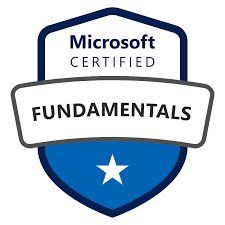Identifying your application attack surface exposed on the internet Using OSS.
Understanding your application's attack surface is crucial for maintaining cybersecurity. An attack surface refers to all the points where an unauthorized user could potentially enter or extract data
Key Takeaways
An attack surface includes all the points where cyber threats can enter a system.
Open-source tools offer affordable and customizable options for managing attack surfaces.
Regular monitoring is essential to identify new vulnerabilities and assets.
Hidden risks can arise from forgotten cloud services or unpatched applications.
Using OSINT helps gather valuable information to improve overall cybersecurity.
Understanding the Concept of Attack Surface
Defining Attack Surface in Cybersecurity
An attack surface is the total of all the points where an unauthorized user can try to enter or extract data from an environment. In simpler terms, it’s like the entry points into your system that hackers might exploit. Understanding your organization's attack surface is crucial because it helps you see the exposed and internet-facing assets that could be at risk.
Components of an Attack Surface
The attack surface consists of various components, including:
Network Interfaces: These are the connections that allow devices to communicate.
Applications: Software that can be targeted for vulnerabilities.
User Accounts: Each account can be a potential entry point for attackers.
APIs: These allow different software systems to communicate, but can also be exploited.
Importance of Managing Attack Surface
Managing your attack surface is essential for several reasons:
Risk Reduction: By identifying vulnerabilities, you can take steps to fix them.
Proactive Defense: Regularly monitoring your attack surface helps you stay ahead of potential threats.
Compliance: Many regulations require organizations to manage their cybersecurity risks effectively.
Understanding your attack surface is not just about knowing what you have; it’s about knowing how to protect it.
By keeping track of these components and their vulnerabilities, organizations can better defend against cyber threats and minimize the risks associated with their attack surface.
Leveraging Open-Source Tools for Attack Surface Management
Benefits of Open-Source Tools
Open-source tools are essential for managing your attack surface effectively. They provide a cost-effective way to enhance your cybersecurity. Here are some key benefits:
Cost-Effective Solutions: Many open-source tools are free or low-cost, making them accessible to various organizations.
Community Collaboration: Users can share knowledge and solutions, creating a supportive environment for problem-solving.
Customization and Flexibility: These tools can be tailored to meet specific needs, allowing for better adaptability in a changing digital landscape.
Transparency and Trust: Open-source projects allow users to inspect the code, ensuring it meets security standards.
Popular Open-Source Tools for Attack Surface Management
There are several well-known open-source tools that can help organizations manage their attack surfaces. Here’s a brief overview:
Tool NamePurposeKey FeaturesNmapNetwork mapping and security auditingPort scanning, service detectionOpenVASVulnerability scanningComprehensive vulnerability assessmentSpiderFootOSINT automation for threat intelligenceAsset discovery, risk assessment
Case Studies of Open-Source Tools in Action
Many organizations have successfully used open-source tools to enhance their security. For example:
A small business used Nmap to identify open ports and secure their network.
A non-profit organization leveraged OpenVAS to find vulnerabilities in their web applications.
A tech startup utilized SpiderFoot for comprehensive asset discovery, improving their overall security posture.
Open-source tools are not just about saving money; they empower organizations to take control of their security.
By leveraging these tools, organizations can effectively manage their attack surfaces and reduce the risk of cyber threats. Understanding the benefits and capabilities of open-source tools is crucial for any cybersecurity strategy.
Techniques for Identifying Internet-Facing Assets
Identifying your organization's Internet-facing assets is crucial for understanding your attack surface. Here are some effective techniques:
DNS Brute-Forcing
This method involves trying various subdomains like
www,mail,blog, andvpnto discover hidden assets.Tools like OWASP Amass can automate this process, making it easier to find exposed services.
Analyzing Certificate Transparency Logs
Certificate transparency logs help track SSL certificates issued for your domain.
By reviewing these logs, you can identify unexpected or unauthorized certificates that may indicate vulnerabilities.
Port Scanning and Banner Grabbing
Port scanning allows you to discover open ports on your servers.
Banner grabbing helps identify the services running on those ports, providing insight into potential weaknesses.
Web Scraping and API Querying
Web scraping can gather data from your own websites or third-party sites to find exposed information.
Querying APIs from services like SHODAN or Censys can reveal additional Internet-facing assets.
In summary, using a combination of these techniques can help you effectively identify and manage your organization's Internet-facing assets.
By regularly applying these methods, you can maintain a comprehensive view of your attack surface and respond to potential threats more effectively. Remember, Microsoft Defender for Endpoint automatically identifies and flags onboarded, exposed, internet-facing devices in the Microsoft Defender portal, making it easier to keep track of your assets.
Continuous Monitoring and Vulnerability Management
Importance of Continuous Monitoring
Continuous monitoring is the real-time, or near real-time process of monitoring and analyzing systems for vulnerabilities. This practice is essential for organizations to stay ahead of potential threats. By keeping an eye on your digital assets, you can quickly identify and address vulnerabilities before they can be exploited.
Tools for Continuous Vulnerability Management
To effectively manage vulnerabilities, organizations can utilize various tools. Here are some popular options:
Nmap: A powerful tool for network discovery and security auditing.
OpenVAS: Useful for identifying potential attack vectors and vulnerabilities.
DefectDojo: Helps track and prioritize vulnerabilities efficiently.
ToolPurposeKey FeatureNmapNetwork discovery and security auditingPort scanning and OS detectionOpenVASVulnerability assessmentRegular updates for new vulnerabilitiesDefectDojoVulnerability managementTask assignment and progress tracking
Best Practices for Monitoring and Management
To ensure effective monitoring and management of vulnerabilities, consider the following best practices:
Regular Scanning: Schedule frequent scans to identify new vulnerabilities.
Prioritize Risks: Focus on high-risk vulnerabilities first to mitigate potential threats.
Integrate Tools: Use a combination of tools for comprehensive coverage.
Continuous monitoring is not just a task; it’s a vital strategy for maintaining security in a rapidly changing digital world. By leveraging the right tools and practices, organizations can significantly reduce their attack surface and enhance their overall security posture.
Addressing Hidden Risks in Attack Surfaces
Common Hidden Risks
Hidden risks in attack surfaces can often go unnoticed. Here are some common ones:
Forgotten cloud resources: Infrastructure that is no longer in use but still accessible.
Unpatched web applications: Software that hasn’t been updated, leaving vulnerabilities.
Expired SSL certificates: Certificates that are no longer valid, which can lead to security issues.
Impact of Cloud and Remote Work on Attack Surface
The shift to cloud services and remote work has changed how we view security. Some impacts include:
Increased entry points: More devices and applications mean more ways for attackers to get in.
Reduced visibility: It’s harder to keep track of all assets when they are spread out.
Personal accounts for work: Employees using personal accounts can expose sensitive data.
Mitigation Strategies for Hidden Risks
To manage these hidden risks, consider the following strategies:
Regular audits: Check your systems frequently to find forgotten assets.
Update software: Keep all applications up to date to close security gaps.
Monitor SSL certificates: Ensure all certificates are valid and renewed on time.
Managing your attack surface is crucial. An attack surface analysis will help you identify immediate risks and potential future risks. Your attack surface analysis won't fix every problem you find, but it’s a vital step in securing your systems.
Utilizing OSINT for Comprehensive Attack Surface Discovery
Open-source intelligence (OSINT) plays a crucial role in understanding and managing your attack surface. It helps in identifying and cataloging both active and inactive assets connected to your network. Here’s how OSINT can be effectively utilized:
Role of OSINT in Attack Surface Management
Asset Discovery: OSINT tools can find various devices connected to your network, including servers and applications.
Service Identification: They can discover open ports and the services running on them, along with their versions.
Historical Data: OSINT can unearth passive and historical DNS and Whois data, providing insights into your digital footprint.
Tools for OSINT-Based Discovery
Here are some popular OSINT tools that can assist in attack surface discovery:
SpiderFoot: Automates the collection of OSINT data.
Shodan: Helps find devices connected to the internet.
Recon-ng: A web reconnaissance framework that provides various modules for OSINT.
Integrating OSINT with Other Security Measures
Continuous Monitoring: Regularly check for new vulnerabilities and assets.
Incident Response: Use OSINT to inform your incident response plans and strategies.
Collaboration: Work with security teams to share insights gained from OSINT.
OSINT is a valuable resource for detecting, monitoring, and responding to cyber threats. It provides a broader understanding of your organization’s attack surface, helping to identify potential vulnerabilities before they can be exploited.
Responding to Detected Vulnerabilities and Threats
Incident Response Planning
When a vulnerability is found, having a solid incident response plan is crucial. This plan should include:
Identification: Quickly recognize the nature and scope of the threat.
Containment: Limit the damage by isolating affected systems.
Eradication: Remove the threat from your environment.
Recovery: Restore systems to normal operations.
Lessons Learned: Review the incident to improve future responses.
Tools for Threat Detection and Response
Using the right tools can make a big difference in how effectively you respond to threats. Some popular tools include:
Nmap: For network discovery and security auditing.
OpenVAS: A full-featured vulnerability scanner.
SOCRadar: For real-time monitoring of your assets.
Case Studies of Effective Threat Response
Many organizations have successfully managed threats by implementing strong response strategies. Here are a few examples:
Company A: Detected a breach and contained it within hours, minimizing data loss.
Company B: Used automated tools to identify vulnerabilities, leading to a quicker response time.
Company C: Conducted a thorough post-incident review, which helped prevent future attacks.
In cybersecurity, application detection and response is the gap-bridging process that ensures you can both detect threats and malicious activity and respond to them effectively.
By having a clear plan, using the right tools, and learning from past incidents, organizations can better protect themselves against future threats.
Conclusion
In summary, managing your attack surface is an ongoing task that requires constant attention. Using open-source tools can make this job easier and more affordable for organizations of all sizes. These tools not only help you see your vulnerabilities but also allow you to work together with others in the community. As you explore the digital world, tools like Nmap and OpenVAS can be very helpful. However, remember that cyber threats are always changing, so it’s important to have a complete strategy. By combining different tools and approaches, you can better protect your organization from potential attacks.
Frequently Asked Questions
What is an attack surface in cybersecurity?
An attack surface is like the total number of ways someone could get into a system. It includes all the points where an attacker could try to enter and cause harm.
Why is it important to manage an attack surface?
Managing an attack surface helps keep systems safe by identifying and fixing weaknesses before attackers can exploit them.
What are some common tools used for attack surface management?
Some popular tools include Nmap, which scans networks, and OWASP Amass, which helps find exposed assets.
How can open-source tools help in attack surface management?
Open-source tools are often free and customizable, making them accessible for many organizations to enhance their security.
What techniques can be used to find internet-facing assets?
Techniques include checking DNS records, scanning for open ports, and using web scraping to gather information.
What should I do if I find vulnerabilities in my system?
If you find vulnerabilities, you should create an incident response plan, address the issues quickly, and monitor for future threats.
About Me: I have been in IT for over 20 years on and off, Then 10 years ago pivoting into cybersecurity roles at major tech companies, including Microsoft. The highlights of my experience include cross-functional collaboration with DevOps and infrastructure to adopt secure methodologies for cloud containers and services. LinkedIn Discord Skool
Get a free risk assessment via Cyberseb.com
Thanks for reading Seb’s Substack! Subscribe for free to receive new posts and support my work.




